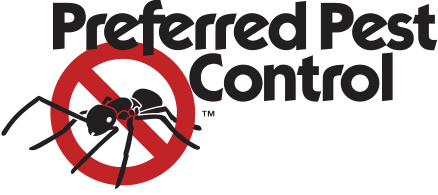Parasite Control 101: Identifying Common Vermin and Their Reliable Therapies
Insect control is an essential aspect of maintaining a healthy living setting. Typical insects like ants, rodents, and numerous bugs can pose significant difficulties. Recognizing their habits and signs of problem is essential for reliable administration. While chemical services exist, there are also natural alternatives worth taking into consideration. As one discovers the nuances of parasite recognition and therapy alternatives, the importance of prevention techniques becomes significantly noticeable. What methods can genuinely maintain parasites at bay?
Determining Ants: Kinds and Their Environments
Ants, tiny yet formidable pests, are a varied group that can be discovered in different environments throughout the globe. There are over 12,000 recognized varieties, each showing distinct actions and adaptations. Typical kinds include the black yard ant, which grows in pleasant areas, and the fire ant, known for its unpleasant sting, prevalent in warmer areas. Woodworker ants favor wet timber, making them a concern for house owners, while scent-laden house ants are drawn in to human food resources.
Ants create complex nests, typically below ground, in timber, or within frameworks. Their environments vary from forests to metropolitan settings, showcasing their versatility. Many species are social, residing in swarms that can differ in dimension from a few loads to millions. Recognizing the sort of ant is crucial for efficient pest monitoring, as each varieties has different nesting routines and foraging behaviors that influence control methods. Understanding their environments help in avoidance and therapy initiatives.
Identifying Rodents: Indicators of Invasion
Rodents, like ants, can pose considerable difficulties for home owners and services alike. Acknowledging indications of a problem is necessary for reliable insect control. Typical indicators consist of droppings, which are often found near food resources or nesting locations; small, dark pellets that can be mistaken for seeds. Eaten wires, furniture, or packaging may likewise signal a rodent existence, as they constantly munch to maintain their teeth manageable. In addition, house owners could notice gnaw marks on wall surfaces or baseboards. Unpleasant odors, coming from pee and droppings, can show a larger issue. Scraping or scampering noises, especially in the evening, are one more dead giveaway of rats. Ultimately, the visibility of nests, commonly made up of shredded products like paper or fabric, can validate an infestation. Addressing these indicators without delay can aid alleviate damage and avoid the spread of illness connected with rodents.
Typical Bug Pests: From Aphids to Termites
Insects represent a diverse team of insects that can create chaos in gardens and homes, with varieties ranging from tiny aphids to devastating termites. Aphids are little, sap-sucking bugs that can promptly infest plants, leading to stunted growth and distortion. They often bring in ants, which protect them from all-natural killers. On the other end of the spectrum, termites are infamous for triggering substantial architectural damages to wood frameworks. They take in cellulose located in wood, endangering the honesty of buildings and homes. Various other common insect pests include cockroaches, which flourish in unhygienic conditions, and bedbugs, known for their attacks and problem in obliteration. Flies, especially houseflies, can contaminate food and send conditions, while insects position wellness dangers through their bites. Effective bug administration starts with recognizing these pests and comprehending their habits, which is important for shielding and protecting against invasions both residential property and health.
Reliable Treatments: Chemical and Natural Solutions
While property owners often seek instant remedy for pest problems, selecting the appropriate treatment-- whether chemical or all-natural-- requires mindful factor to consider of efficiency and safety and security. Chemical solutions, such as pesticides and pesticides, can supply rapid results however often lug threats, consisting of prospective damage to non-target types and ecological issues. Home owners must check out tags, follow application guidelines, and consider the timing of therapies to lessen risks.
On the other hand, natural services, such as diatomaceous earth, crucial oils, or homemade traps, allure to those looking for green options. Although they may take longer to reveal results, several natural treatments are much safer for houses with kids and pets - Pest Control Homestead. Integrated pest management, which integrates both chemical and natural approaches, can additionally work. Eventually, the choice in between these treatment types ought to line up with the severity of the problem, individual values pertaining to safety, and read more the specific bug being targeted
Avoidance Strategies: Keeping Your Home Pest-Free

Additionally, correct landscaping can deter pests; keeping shrubs trimmed and eliminating particles from the yard reduces concealing places. House owners must also take into consideration moisture control, as lots of parasites thrive in wet conditions. Repairing leakages and making sure appropriate drain can reduce this threat. Using natural deterrents, such as crucial oils or diatomaceous planet, can produce an unfavorable atmosphere for pests. By carrying out these techniques, people can produce a pest-free home and minimize the probability of future problems.
Frequently Asked Inquiries
Exactly how Do I Know if I Have an Insect Issue?
Signs of an insect trouble consist of droppings, gnaw marks, nests, or uncommon sounds. Observing damaged food or home, in addition to unusual attacks or rashes, may also show the visibility of pests in the environment.
Exist Any Kind Of Seasonal Insect Trends to Be Knowledgeable about?

Can Indoor Plants Attract Pests?
Interior plants can indeed draw in insects, as they supply an ideal environment for bugs like aphids and spider termites. Pest Control Homestead. Correct treatment and routine examination are important to prevent problems and maintain plant health and wellness
What Are the Wellness Threats Linked With Insect Infestations?
Insect problems pose different health risks, including allergic reactions, respiratory system concerns, and the spread of conditions. Exposure to pests like pests and rats can lead to infections, bites, and contamination of food and living settings.
Exactly how Usually Should I Examine My Home for Insects?
Normal assessments must happen at least as soon as every period, making sure any type of indicators of parasite activity are detected early. House owners may adjust frequency based upon their specific setting and previous insect concerns. Uniformity is crucial.
Usual insects like ants, rodents, and different pests can position significant obstacles. Determining the type of ant is vital for efficient pest administration, as each varieties has different nesting habits and foraging habits that influence control techniques. While home owners commonly look for prompt relief from parasite infestations, picking the appropriate therapy-- whether chemical or natural-- calls for careful factor to consider of efficiency and safety. Efficient insect control prolongs past immediate treatments; it likewise entails proactive actions to protect against problems before they begin. Seasonal bug trends usually include raised rodent task in fall as they seek warmth, while springtime commonly brings an influx of termites and ants.